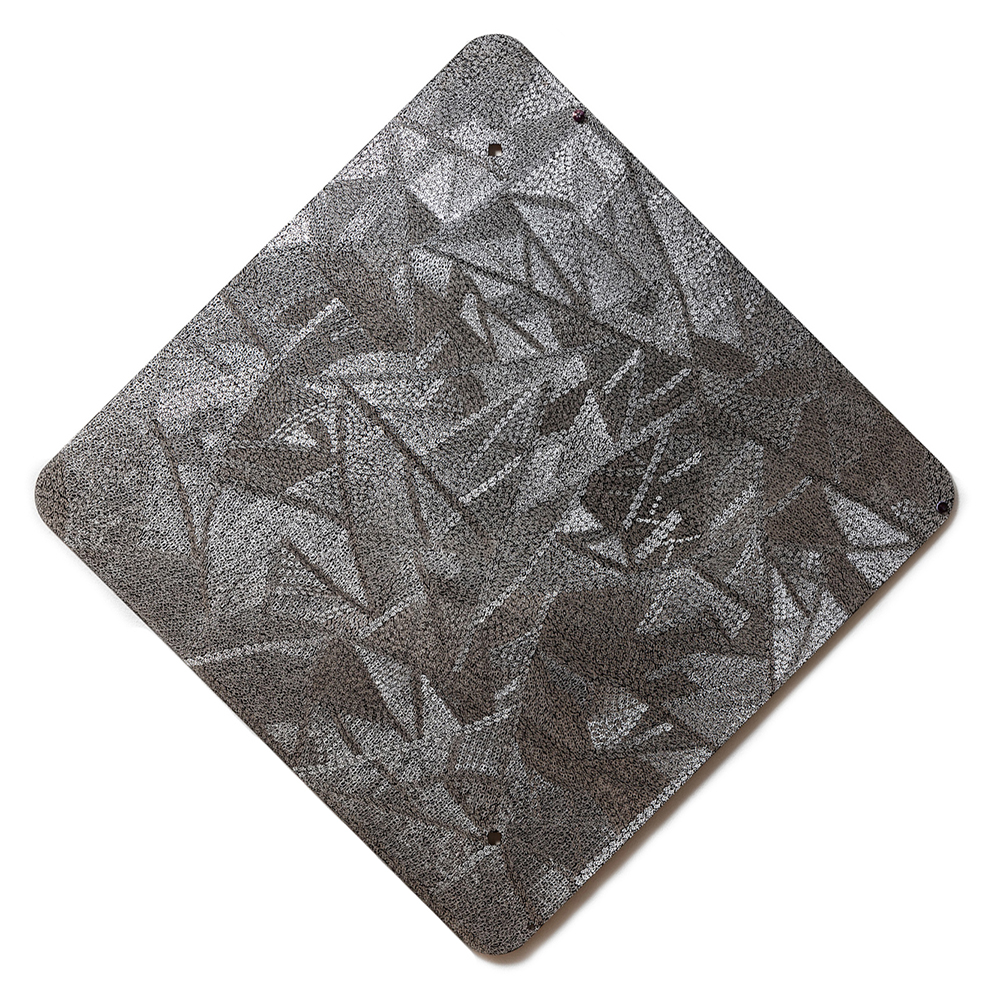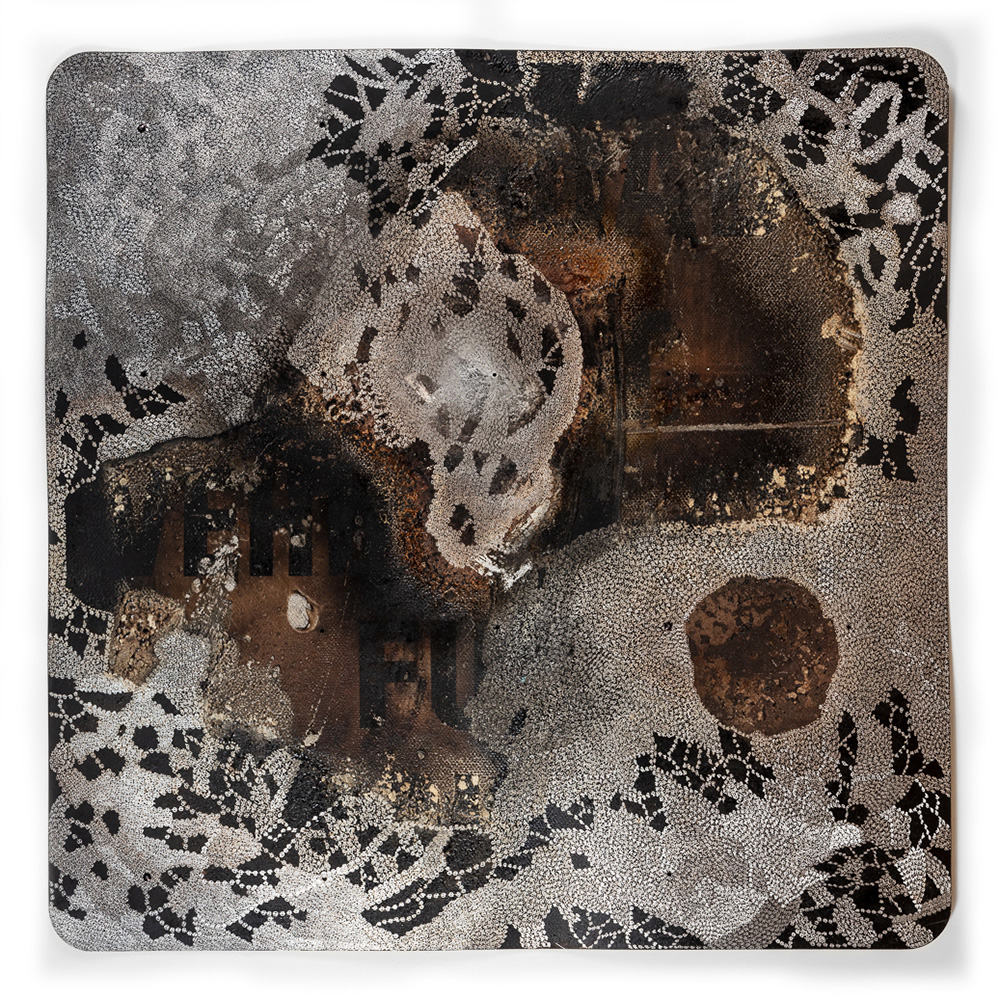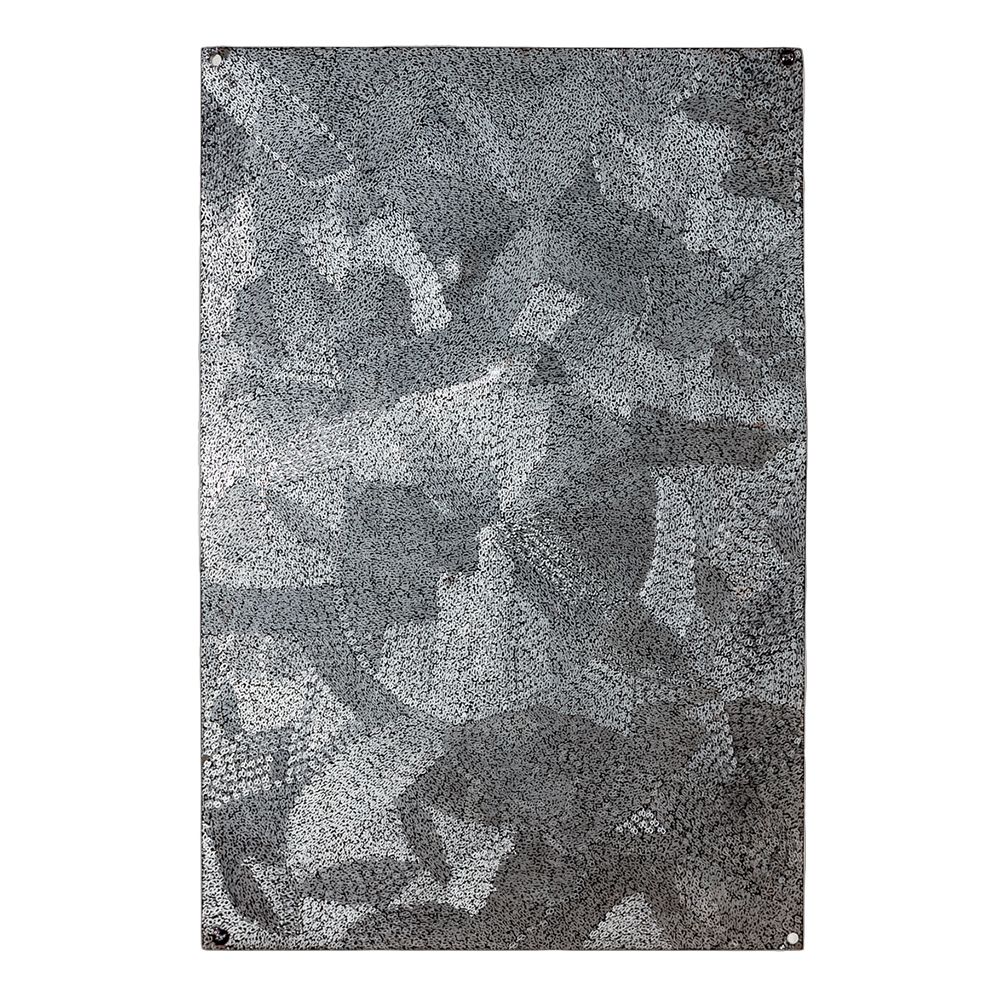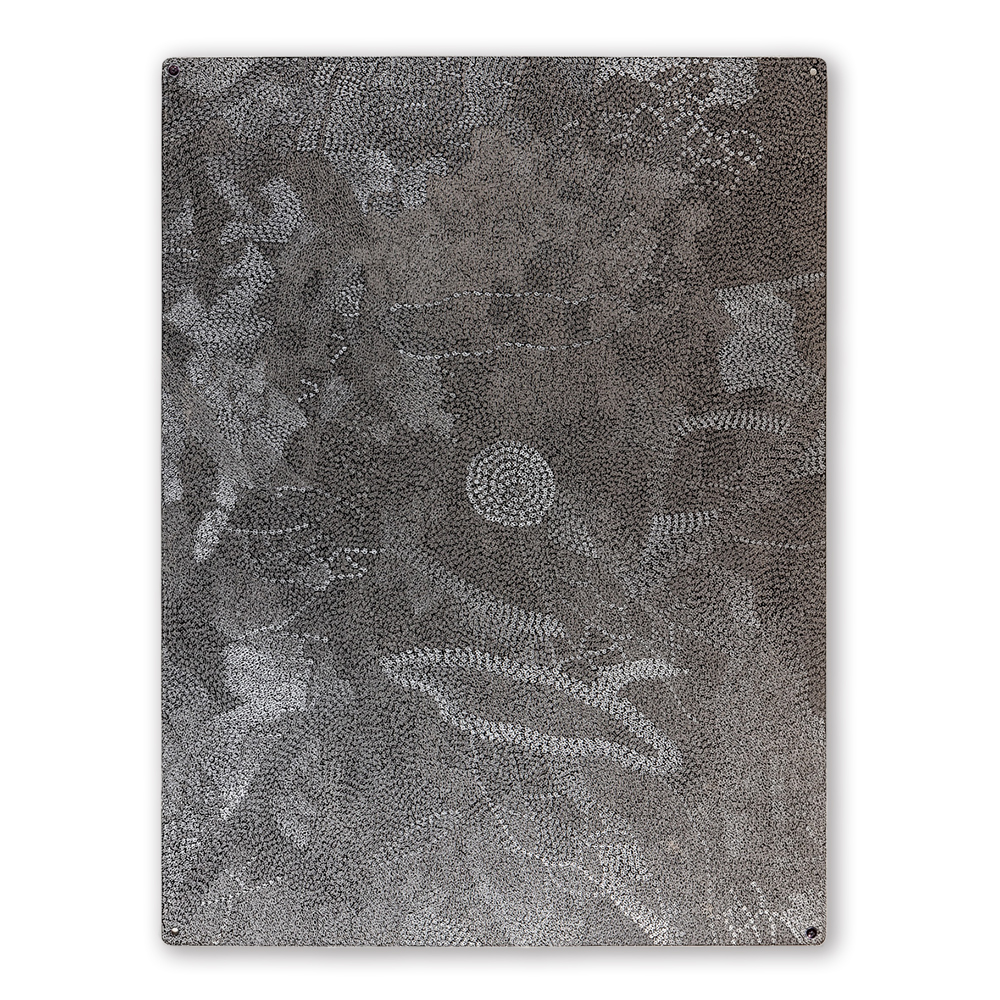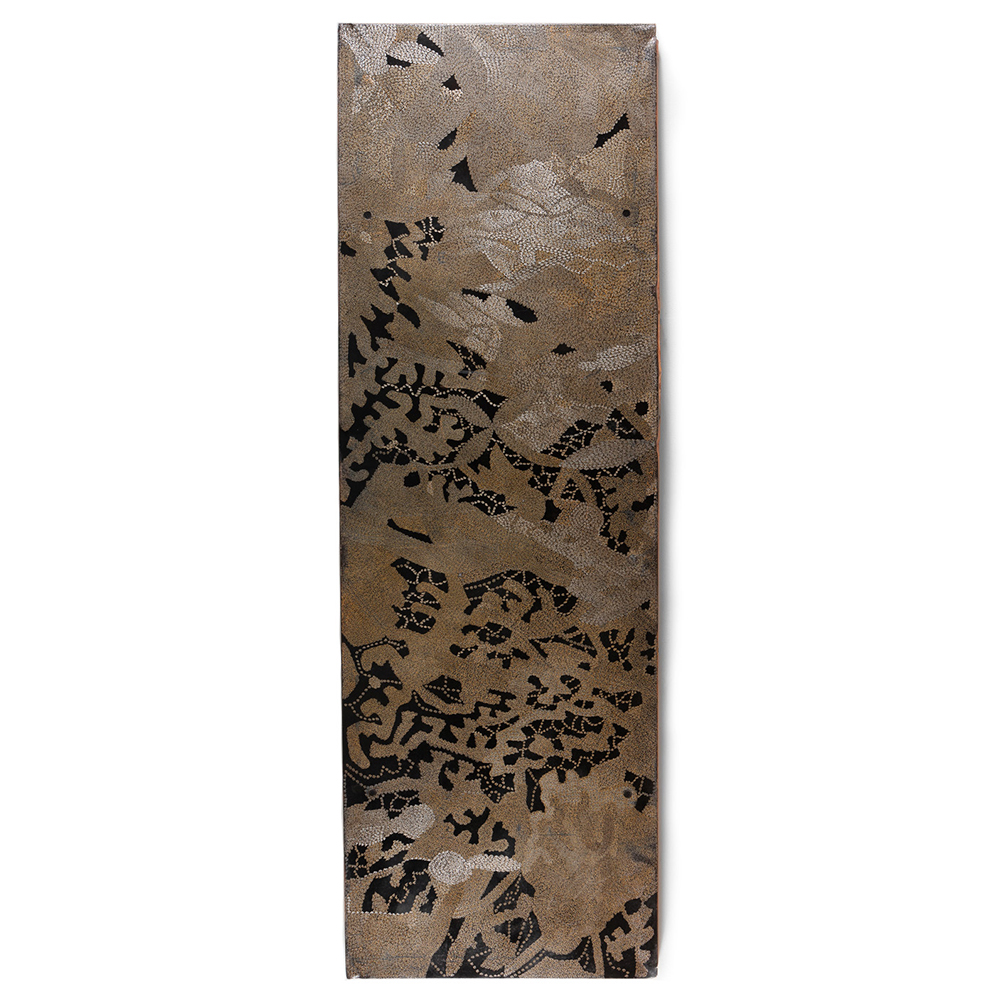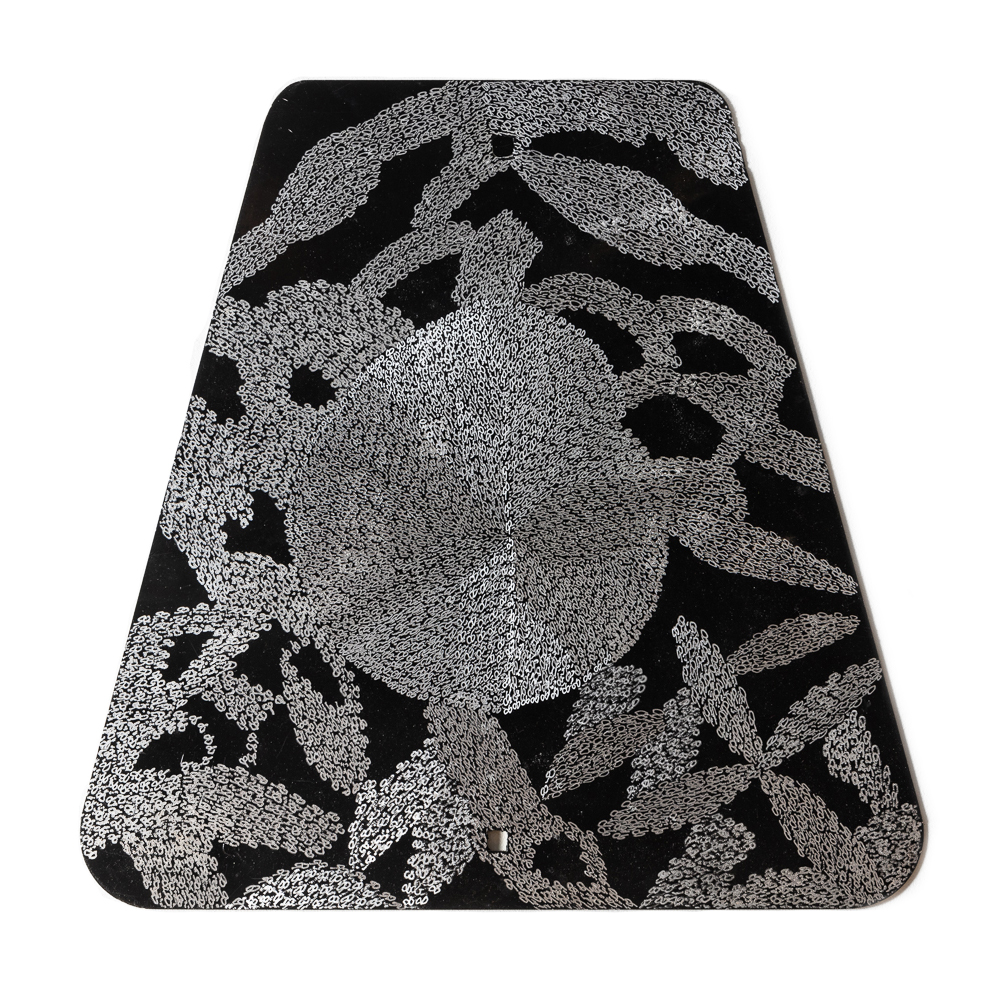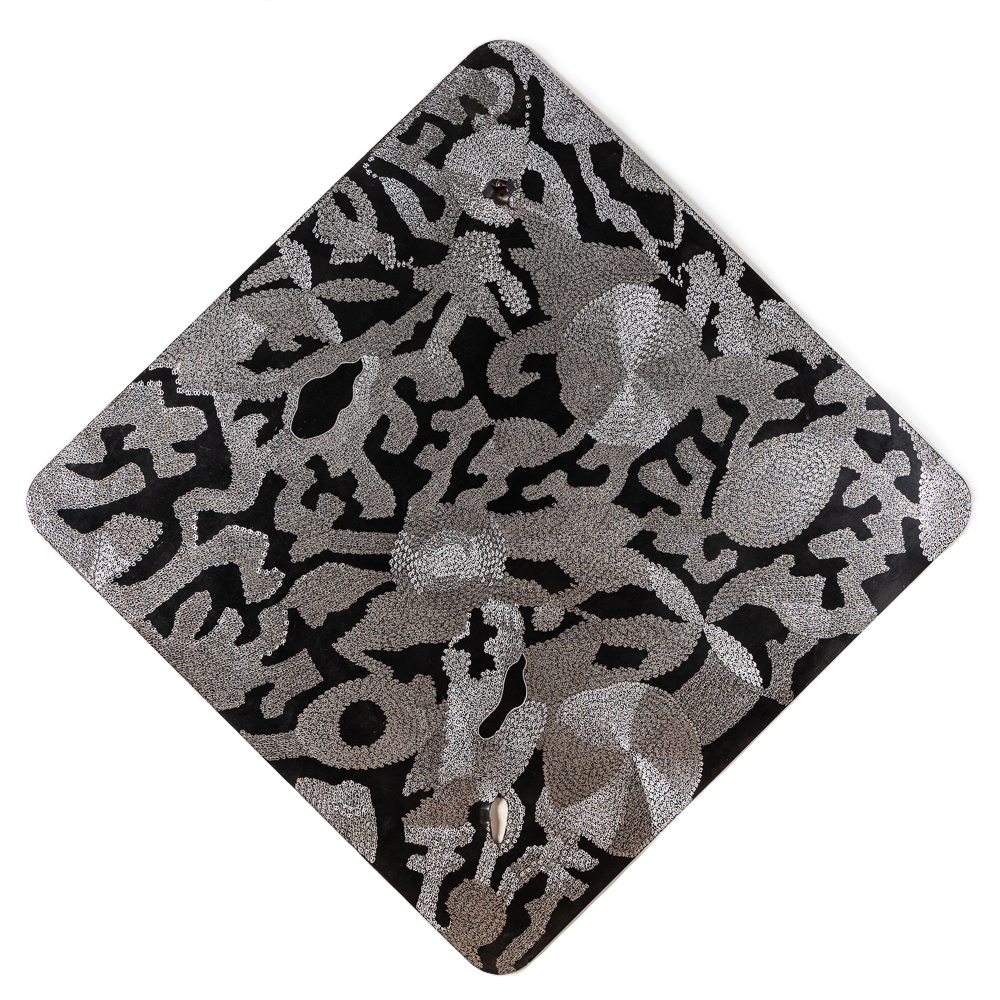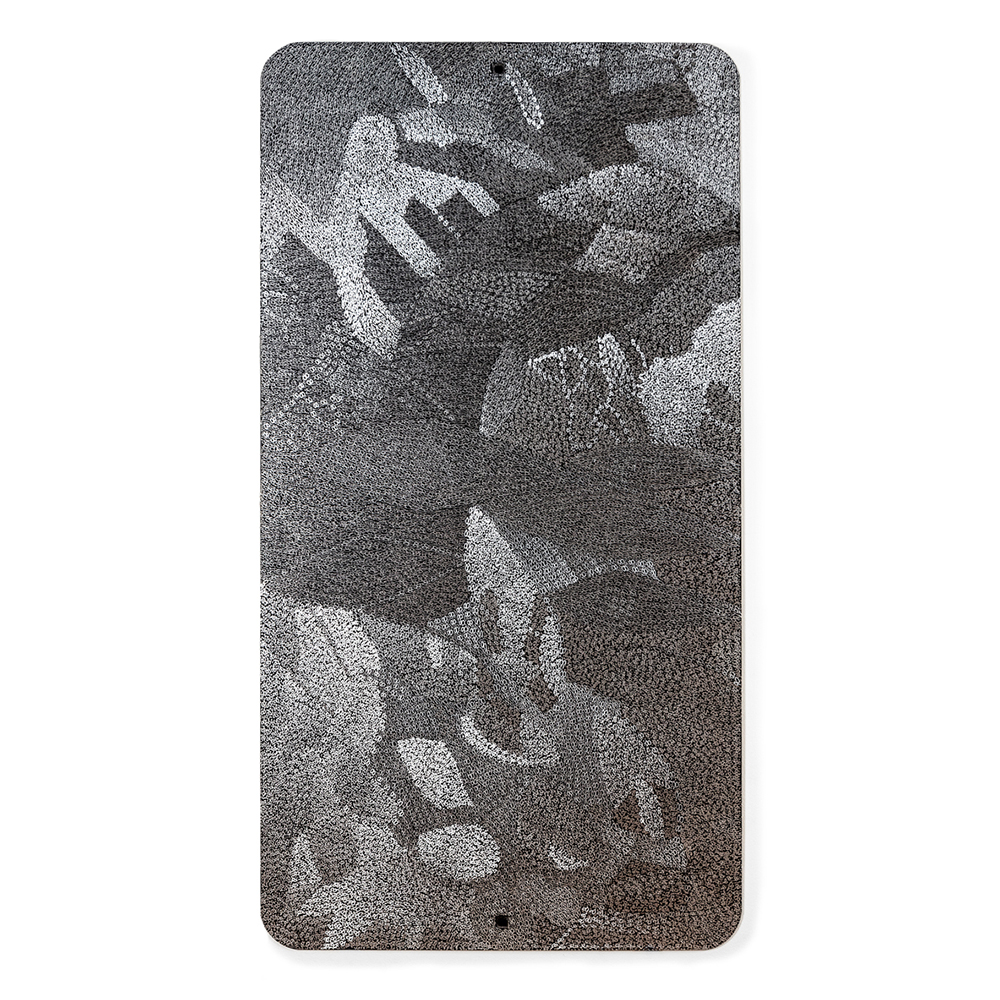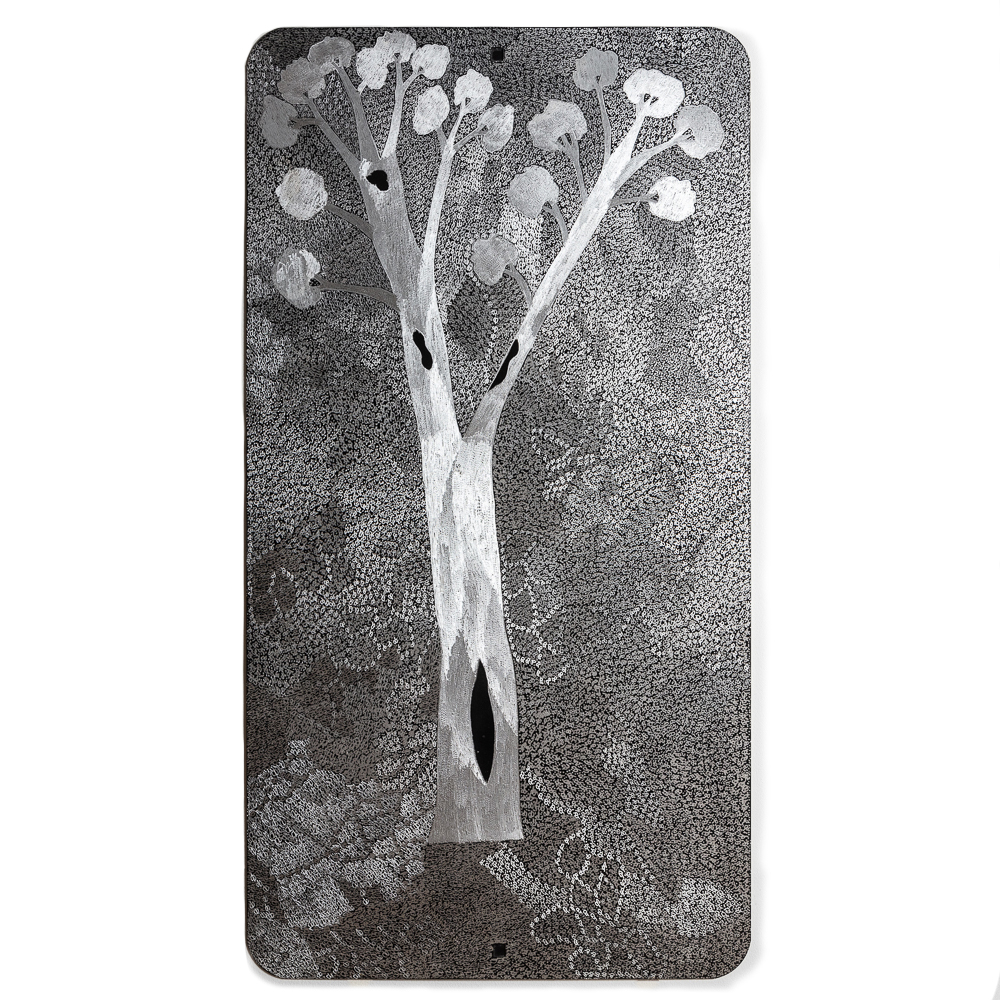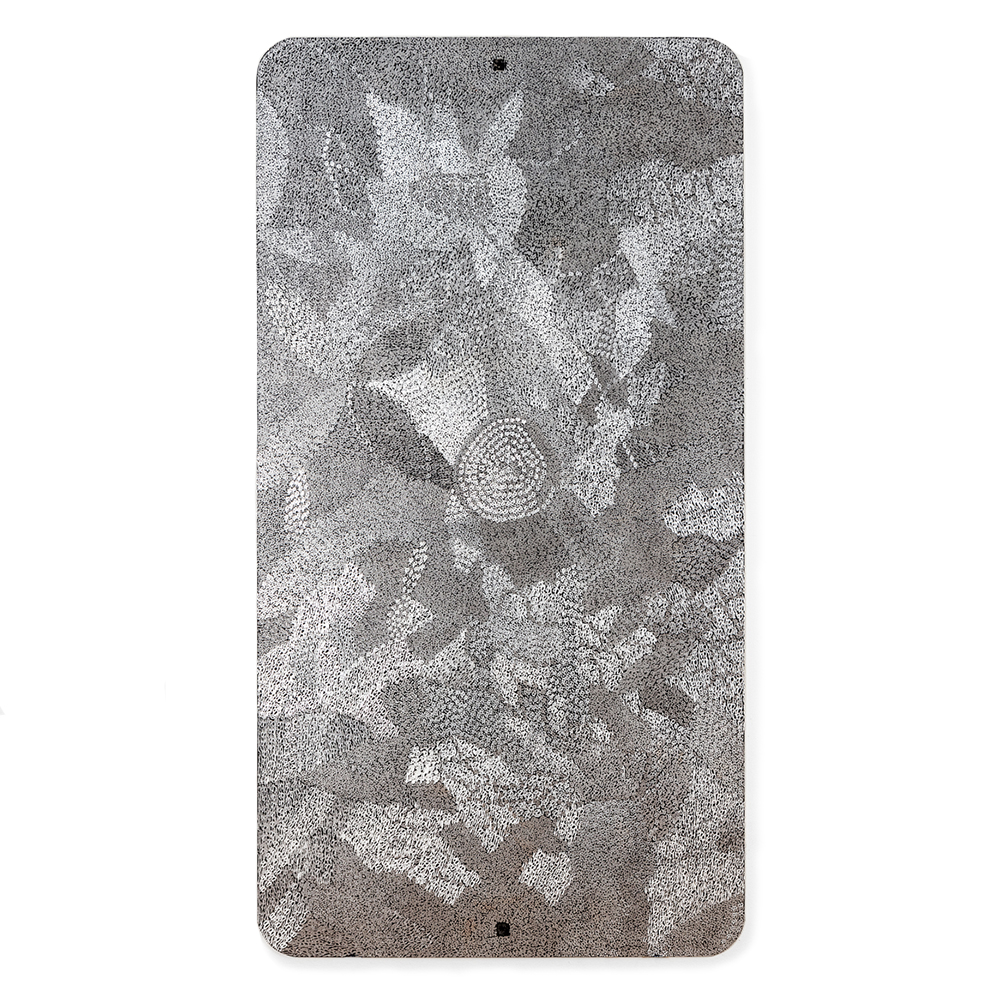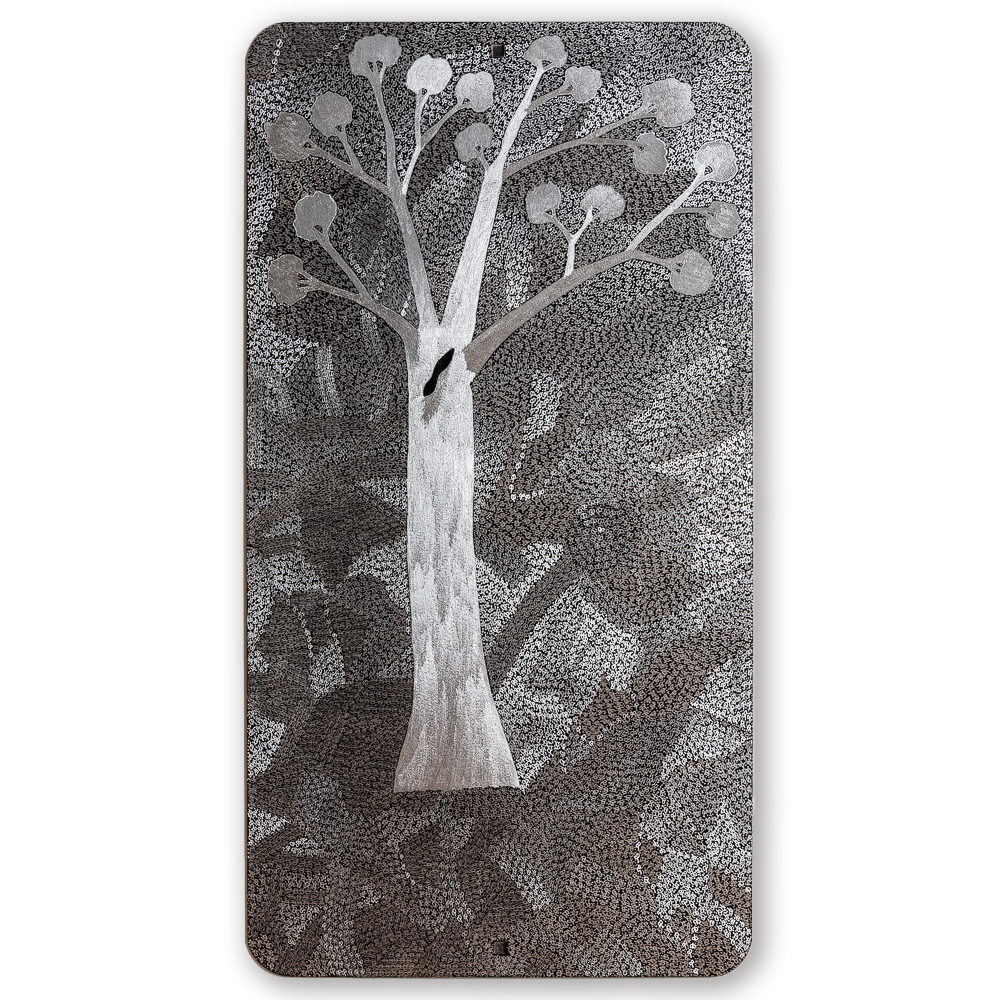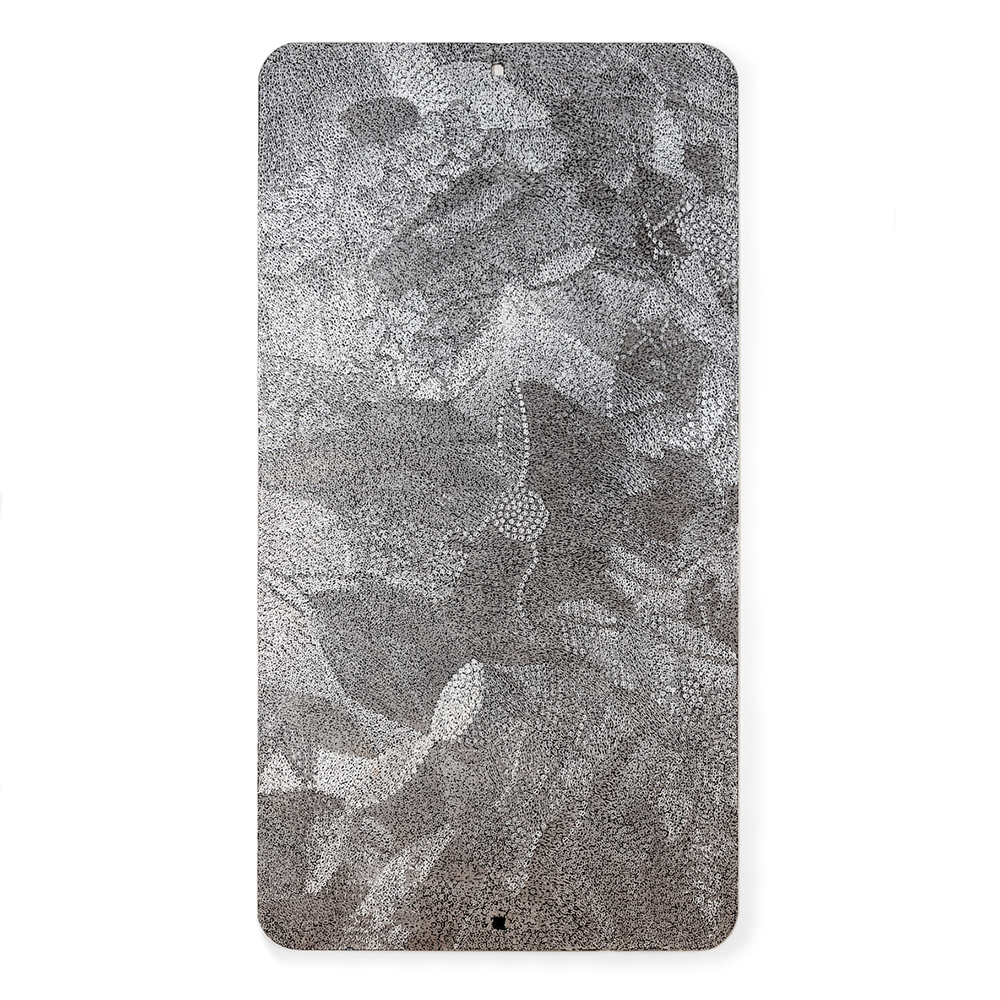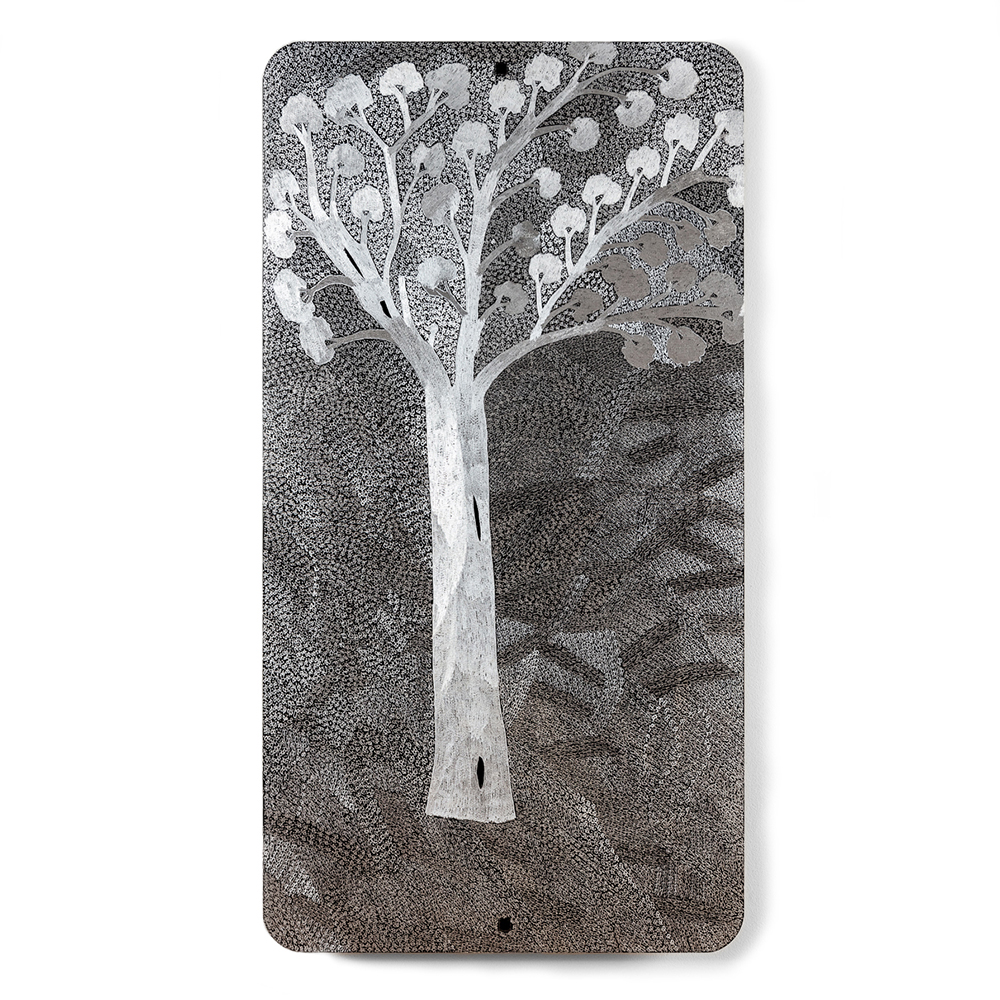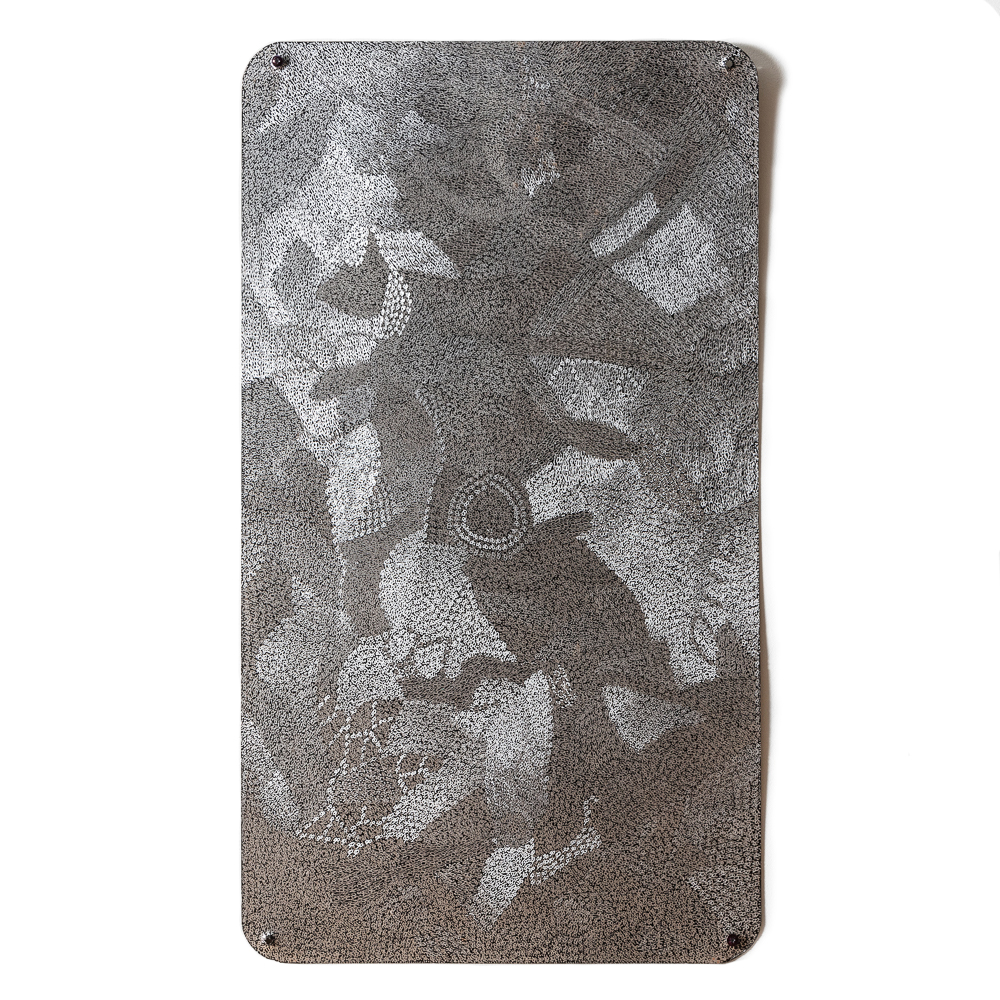Gaypalani
- Gaypalani Wanambi
- 8 Feb—9 Mar 2024
- Eora / Sydney
Gaypalani draws her name from the tree of the same name whose yellow blossom enlivens the forests of North East Arnhemland and is a rich source of nectar for native bees. It is also used in dance and in post-funeral cleansing ceremonies as well for hardwood implements like clapsticks, spearthrowers and digging sticks.
In Yolŋu philosophy honey is a metaphor for hard won knowledge. The bees travel further and further to find the best sources to make the sweetest honey. They bring this back to the nest to share with their tribe. Gaypalani owes her inspiration to her late father whom she assisted in his celebrated artistic career. She continues to grieve for him as do his many friends worldwide. But she continues his spirit of enquiry and innovation as the first and foremost female exponent of the Found Movement.
Her intricate engravings on repurposed road signs and scrap metal are unique. They honour the songlines of her Marrakulu clan ancestral being Wuyal. These epic song poems track his odyssey from the stone quarries of Ŋilipitji in Southern Arnhem Land along the northern coastline and across to the West past Arnhem Bay. His quest for the sacred Avatar-like Waṉambi tree describes him passing through the lands of a confederacy of clans who are linked through this honeyed journey.
Working from the Buku-Larrnggay Mulka Art Centre in Yirrkala, Northeast Arnhem Land, Wanambi is the leading female practitioner within the ‘found movement’, which sees roadside material gleaned on Country repurposed as shimmering, intricately detailed works of art.
For information regarding acquisitions, please contact tobymeagher@michaelreid.com.au

